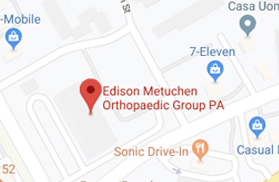Oblique Lumbar Interbody Fusion
The lumbar spine consists of 5 vertebral bones lined one above the other and separated by spongy intervertebral discs that cushion the spine during movement. Over the years, the discs undergo wear and tear, causing the vertebrae to painfully rub against each other every time we move leading to degeneration. This can cause lower back pain as well as pain, numbness, or weakness in the legs. Oblique lumbar interbody fusion (OLIF) is a minimally invasive procedure that involves the removal of damaged intervertebral disc and bone, and fusing of two adjacent spinal vertebrae. It adopts a lateral approach when compared to traditional methods of spinal fusion techniques, and in doing so, spares the disruption of major back muscles, ligaments and bones, and preserves back strength.
Oblique lumbar interbody fusion is recommended to treat abnormal spine curvature, fractured vertebrae, bulging discs, spine instability and spondylolisthesis (slipping out of vertebra).
The procedure is performed under general anesthesia. OLIF is similar in approach to direct lateral interbody fusion (DLIF), but overcomes the drawback of DLIF in its ability to reach the last lumbar vertebra. This is made possible by obliquely approaching the vertebra and avoiding the pelvic bone. An incision is made in the side of your abdomen and soft tissues are carefully separated to reach the lumbar spine. The damaged vertebral bone or intervertebral disc is partially or totally removed. Bone graft or a suitable spacer is placed to maintain the intervertebral space and allow the bones to fuse. Screws, rods and plates may be used for additional support. The soft tissues are carefully repositioned and the incision closed.
You may have to stay in the hospital for 1 to 2 days or longer depending on your condition. Your doctor will prescribe pain medication and a brace to support your back. Physical therapy is recommended to improve strength and movement after surgery. It may take 3 to 6 weeks for the bones to properly fuse and for you to return to work.
As with any surgery, oblique lumbar interbody fusion may be associated with certain complications, which include bleeding, infection, nerve damage, failure of bone fusion, bowel and bladder difficulties.
Spinal surgeries can be very invasive and cause loss of back strength as major muscles need to be cut to reach the centrally placed spine. Oblique lumbar interbody fusion is one of the minimally invasive procedures that approaches the problem area without having to incise major muscle mass and preserves the body’s strength.
Other Spine List
- Normal Anatomy of the Spine
- Back Pain
- Neck Pain
- Spine Trauma
- Vertebral Fractures
- Spine Injections
- Spinal Deformity Surgery
- Posterior Lumbar Decompression with Fusion
- Lumbar Microdiscectomy
- Spinal Cord Stimulator
- Anterior Cervical Decompression with Fusion
- Corpectomy
- Kyphoplasty
- SI joint fusion
- Direct Lateral Interbody Fusion
- Interlaminar Lumbar Instrumented Fusion
- Minimal Access Surgical Technology Transforaminal Lumbar Interbody Fusion
- Lumbar Epidural Steroid Injection
- Laminectomy (Cervical) with Fusion
- Posterior Lumbar Interbody Fusion
- Peripheral Nerve Surgery
 Menu
Menu






